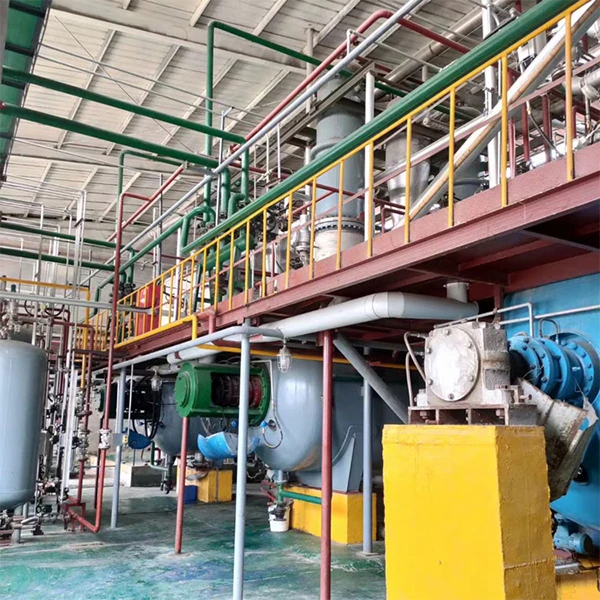The Role of Chemical Composition in Cement Production
Cement, a fundamental material in the construction industry, plays a pivotal role in building infrastructure and various structures. Understanding the chemical composition of cement is crucial not only for its production but also for its performance in construction applications. This article explores the various chemical components found in cement, their significance, and how they affect the material’s properties.
Composition of Cement
Cement is primarily composed of four key mineral phases, which are formed during the clinkerization process
. These phases are1. Tricalcium Silicate (C3S) This is the most abundant phase in most cements, making up about 50-70% of the total composition. It is primarily responsible for the early strength development of cement. The hydration process of C3S releases heat and generates calcium silicate hydrate (C-S-H), the compound that gives concrete its strength.
2. Dicalcium Silicate (C2S) Constituting about 15-30% of the composition, C2S contributes to the long-term strength of cement. It hydrates more slowly than C3S and plays a role in the later stages of strength gain.
3. Tricalcium Aluminate (C3A) Making up about 5-15% of the cement composition, C3A is crucial for controlling the setting time of cement. It reacts rapidly with water, which can lead to quick setting. The presence of C3A is also essential in sulfate resistance. However, high levels of C3A can lead to increased risk of early-age strength gain, which might be undesirable in certain applications.
4. Tetracalcium Aluminoferrite (C4AF) This phase constitutes 5-15% of cement and influences the color and hydration properties. Although it contributes less to strength development, it plays a role in controlling the heat of hydration and can improve resistance to aggressive environmental conditions.
The Importance of Chemical Composition
The specific proportions of these chemical components significantly influence the performance characteristics of cement, including
cement chemical

- Setting Time The ratio of C3A to other phases affects how quickly cement sets. Adjusting this ratio can allow for controlling the setting time, which is critical for various construction applications.
- Strength Development The balance between C3S and C2S determines the rate at which cement gains strength. A higher C3S content facilitates rapid strength gain, which can be beneficial for quick construction processes.
- Durability The chemical composition also impacts the durability of cement. For instance, cements with lower levels of C3A are typically more resistant to sulfates, which can cause deterioration in certain environments.
- Heat of Hydration The presence of C3A and the proportion of C3S can contribute to the overall heat generated during hydration. This is particularly significant in massive structures, where excessive heat can lead to cracking.
Innovations and Future Directions
Advancements in cement technology and a growing focus on sustainability have led to the exploration of alternative materials and methods. The use of industrial by-products like fly ash, slag, and silica fume is increasingly prevalent. These supplementary cementitious materials can enhance the durability and sustainability of cement while reducing the carbon footprint associated with traditional cement production.
Moreover, the development of new cements with optimized chemical compositions tailored for specific applications is an emerging trend. These innovations are aimed at meeting contemporary challenges, such as climate change and the demand for eco-friendly construction practices.
Conclusion
In summary, the chemical composition of cement is a critical factor influencing its performance in construction. Understanding the roles of tricalcium silicate, dicalcium silicate, tricalcium aluminate, and tetracalcium aluminoferrite is essential for optimizing cement formulations. As the construction industry evolves, so too will the recipes for cement, driven by the need for improved performance, sustainability, and resilience in the face of changing environmental conditions. Continuous research and development will undoubtedly lead to further innovations in cement chemistry that will shape the future of construction materials.
-
Rdp that The Revolutionary Polymer Powder Transforming Modern Construction MaterialsNewsAug.11,2025
-
Hpmc Powder that Versatile Additive for Detergents and Personal CareNewsAug.11,2025
-
Hpmc Hydroxypropyl Methylcellulose that Essential Building Material Additive from Shijiazhuang Gaocheng YongfengNewsAug.11,2025
-
Hydroxypropyl Methyl Cellulos Hpmc that Essential for Construction ApplicationsNewsAug.11,2025
-
Mhec Powder that Revolutionizing Construction Chemistry with Cellulose Ether SolutionsNewsAug.11,2025
-
Industri Hpmc that The Global Backbone of Advanced ConstructionNewsAug.11,2025




